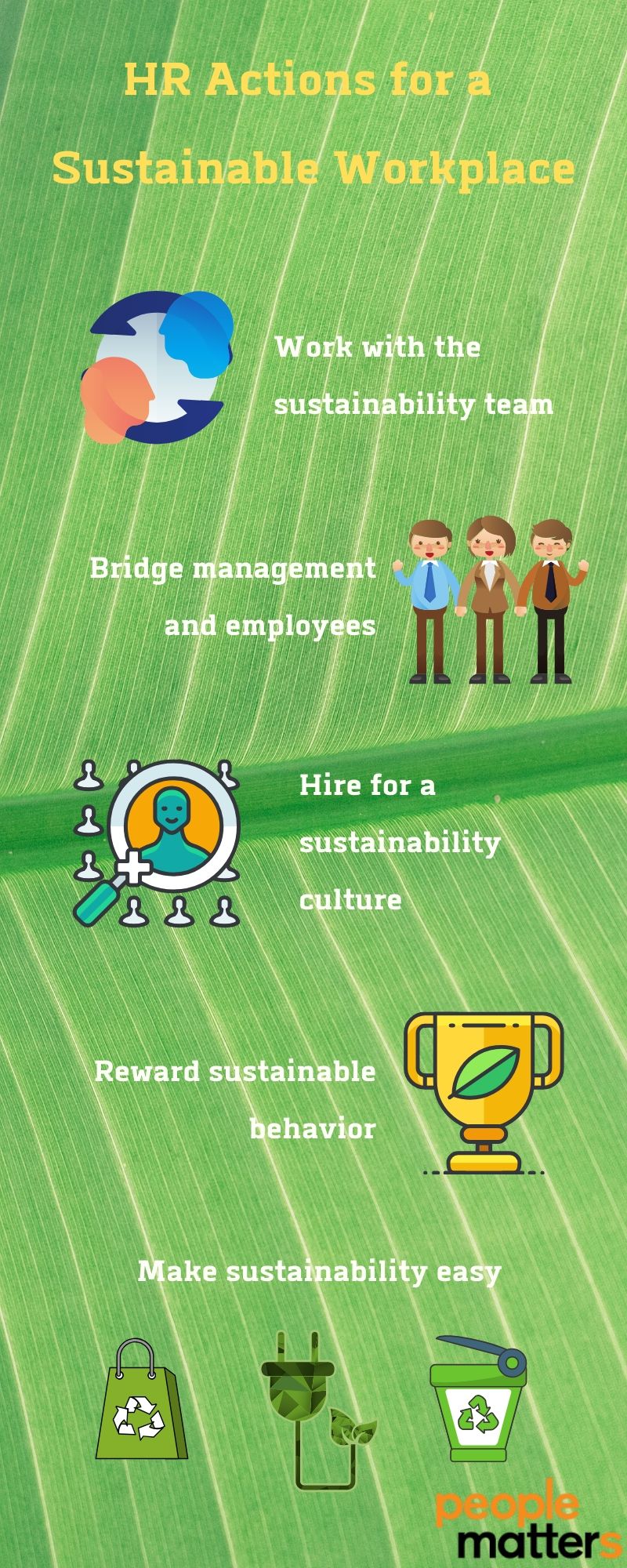Here's how talent leaders can create a sustainable workplace

These days, just telling the world about your sustainable corporate policies isn’t enough any more. Employees want to see sustainability around them on a daily basis, in their workplace environment, practiced by corporate leaders. And as the global climate strikes of September 2019 showed, they feel empowered to express their demands. It’s clear that what was once considered a matter of marketing, then a matter of company policy, has now become a matter of people management. Which is where HR departments come in. This 2020, People Matters suggests five ways for HR people to play a bigger role in making their organizations sustainable.
Talk to the sustainability team
Sustainability is not just a technical issue, says Lindsay Hooper, executive director for education at the Cambridge Institute for Sustainability Leadership. It is about what the business needs to thrive for the future. But CISL’s research has found that the sustainability departments in many businesses could use help with translating that need into something employees can relate to. “So many sustainability people actually just never talk to their colleagues in HR and leadership, and beyond that it has never occurred to them to do so," Hooper said. “So even though [the sustainability people] know the kind of change that is going to be required by the business, they just haven't thought about this in terms of ensuring people are aligned with this.”
That, Hooper suggested, is where HR comes in: talking to the sustainability department, bringing them out of their silo, and helping them figure out how to get the rest of the organization on board.
Bridge the conversation between management and employees
Sustainability is no longer something that can be dictated from the top down. Individual employees have their own ideas about how to improve the organization’s sustainability efforts, and these ideas may sometimes be radically different from what management thinks is appropriate. But when employees’ views and management’s efforts are compatible, the outcome is much better for employee satisfaction. The 2019 HP Workforce Sustainability Survey found that 96 percent of respondents would be willing to recommend their workplace if they felt their employer’s sustainability practices were ahead of the industry. Not only that, they are more loyal and productive.
HR can bring this positivity to the forefront: by hearing out what employees want, conveying it to management, and putting the two conversations together to come up with a mutually agreeable approach.
Hire for a sustainability-focused culture
HR is in the perfect position to operationalize sustainability within an organization: to transform it from a concept to a real, everyday thing that surrounds employees as they work, simply by incorporating it into existing formal structures. Recruitment is an excellent place to start, especially with younger workers increasingly factoring sustainability into their choice of employer, and HR can bring sustainability into recruitment through such simple steps as communicating the organization’s sustainability commitment and values to job-seekers. For example, global retailer Marks and Spencer highlights its sustainability plan on the careers page of its website, where job-seekers can easily see it.
Other ways HR can bring sustainability into hiring practices include assessing candidates for their attitudes towards sustainability, and even incorporating the organization’s sustainability practices and expectations into the onboarding process for new employees.

Upskill and incentivize the workforce
Sustainability requires a certain amount of education to raise awareness and gain employee buy-in. Happily, companies can easily incorporate environmental components into their existing training programmes and even incentivize employees to pursue self-study. For example, City Developments Limited, a major proponent of green buildings and sustainable development in Singapore, includes sustainability-related training in its environment, health, and safety training and awareness programmes. The company further encourages employees to attend external conferences and workshops to strengthen their sustainability knowledge. In 2018, CDL reported that over 50 percent of its employees received sustainability-related training.
Encourage sustainable behavior within the workplace itself
When it comes to visibility, there’s nothing more visible than the surroundings employees work in every day. Simple, environmentally-friendly features such as energy-efficient or water-saving appliances, low-waste practices, or a recycling program say a great deal about how sustainable the company is. And the behavior of the people in the workplace says even more. Do they close the windows and doors when the air conditioning is on? Do they manage their use of office supplies so as not to waste resources? Do they take care not to order more food than they can eat? Do they avoid fast fashion?
Companies that encourage these seemingly small behaviors often see big returns. For example, DBS Bank incorporates sustainable infrastructure in its office spaces and physical branches, and regularly carries out campaigns to encourage its employees to adopt sustainable lifestyle behaviors such as energy savings and waste reduction; some of which won it sustainability accolades in the various markets where the bank operates.















